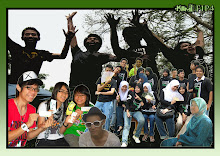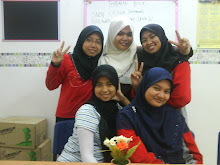![[Presentation2.jpg]](https://blogger.googleusercontent.com/img/b/R29vZ2xl/AVvXsEghpVN15ZqZEjrO7m-gdnoSFbVxAcIZikEXvqrNNzMt0g-uD5_UqjFwMlQOvwaHOsI0kOK3x0UxFNdD0ir8plTvTLxneDCsm2ioGy6jmPZHhSERfyg-WhyphenhyphenfnyaVXdJnjubLyADAJ3to8z8/s320/Presentation2.jpg) Simulation is often used in the training of civilian and military personnel. This usually occurs when it is prohibitively expensive or simply too dangerous to allow trainees to use the real equipment in the real world. In such situations they will spend time learning valuable lessons in a "safe" virtual environment. Often the convenience is to permit mistakes during training for a safety-critical system. For example, in school, teachers practice classroom management and teaching techniques on simulated students, which avoids "learning on the job" that can damage real students. There is a distinction, though, between simulations used for training and Instructional simulation.
Simulation is often used in the training of civilian and military personnel. This usually occurs when it is prohibitively expensive or simply too dangerous to allow trainees to use the real equipment in the real world. In such situations they will spend time learning valuable lessons in a "safe" virtual environment. Often the convenience is to permit mistakes during training for a safety-critical system. For example, in school, teachers practice classroom management and teaching techniques on simulated students, which avoids "learning on the job" that can damage real students. There is a distinction, though, between simulations used for training and Instructional simulation.
Training simulations typically come in one of three categories:
- "live" simulation (where real people use simulated (or "dummy") equipment in the real world);
- "virtual" simulation (where real people use simulated equipment in a simulated world, or virtual environment), or
- "constructive" simulation (where simulated people use simulated equipment in a simulated environment). Constructive simulation is often referred to as "wargaming" since it bears some resemblance to table-top war games in which players command armies of soldiers and equipment that move around a board.
In standardized tests, "live" simulations are sometimes called "high-fidelity", producing "samples of likely performance", as opposed to "low-fidelity", "pencil-and-paper" simulations producing only "signs of possible performance", but the distinction between high, moderate and low fidelity remains relative, depending on the context of a particular comparison.
Simulations in education are somewhat like training simulations. They focus on specific tasks. The term 'microworld' is used to refer to educational simulations which model some abstract concept rather than simulating a realistic object or environment, or in some cases model a real world environment in a simplistic way so as to help a learner develop an understanding of the key concepts. Normally, a user can create some sort of construction within the microworld that will behave in a way consistent with the concepts being modeled. Seymour Papert was one of the first to advocate the value of microworlds, and the Logo (programming language) programming environment developed by Papert is one of the most famous microworlds. As another example, the Global Challenge Awardonline STEM learning web site uses microworld simulations to teach science concepts related to global warming and the future of energy. Other projects for simulations in educations are Open Source Physics, NetSim etc.
Management games (or business simulations) have been finding favour in business education in recent years. Business simulations that incorporate a dynamic model enable experimentation with business strategies in a risk free environment and provide a useful extension to case study discussions.
Social simulations may be used in social science classrooms to illustrate social and political processes in anthropology, economics, history, political science, or sociology courses, typically at the high school or university level. These may, for example, take the form of civics simulations, in which participants assume roles in a simulated society, or international relations simulations in which participants engage in negotiations, alliance formation, trade, diplomacy, and the use of force. Such simulations might be based on fictitious political systems, or be based on current or historical events. An example of the latter would be Barnard College's "Reacting to the Past" series of educational simulations.The "Reacting to the Past" series also includes simulation games that address science education.
In recent years, there has been increasing use of social simulations for staff training in aid and development agencies. The Carana simulation, for example, was first developed by the United Nations Development Programme, and is now used in a very revised form by the World Bank for training staff to deal with fragile and conflict-affected countries.
![[Presentation1.jpg]](https://blogger.googleusercontent.com/img/b/R29vZ2xl/AVvXsEgdDBEE7x63Wa38LrIE0VFjpeiJyLDcJXndtphL83CmMU1tzz5UNNOAFPXgbrARDZr8Jcu0Ca2xvaKOP9o0Y0-QqvBnXkfKRCbIUgXObEkmPKOXzF88e1mdGTMfX76xspzptDY0sgy8w2A/s320/Presentation1.jpg)


.jpg)







0 comments:
Post a Comment